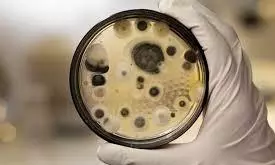
Pharaoh's curse fungus may hold key to fighting cancer: Penn scientists
text_fieldsA fungus long associated with death and mystery in ancient tombs may now offer hope in modern medicine.
Researchers at the University of Pennsylvania have uncovered that Aspergillus flavus, often dubbed the “pharaoh’s curse fungus,” contains compounds capable of attacking cancer cells.
In a groundbreaking study published on June 23 in Nature Chemical Biology, scientists announced that they isolated a new class of molecules from the fungus. These molecules, called asperigimycins, showed potent anti-cancer effects when tested against leukaemia cells — even without any chemical modification.
The research team extracted four distinct ribosomally synthesised and post-translationally modified peptides (RiPPs) from various strains of A. flavus and observed that these asperigimycins disrupted cancer cell division by preventing the formation of microtubules, structures critical for cell replication.
“Fungi gave us penicillin,” said Sherry Gao, Presidential Penn Compact Associate Professor in Chemical and Biomolecular Engineering and Bioengineering, who led the study. “These results show that many more medicines derived from natural products remain to be found.”
“Cancer cells divide uncontrollably. These compounds block the formation of microtubules, which are essential for cell division,” Dr Gao added.
Often referred to as the "pharaoh’s curse fungus," A. flavus gained notoriety in the 1970s after a group of scientists investigating Poland’s Casimir IV tomb mysteriously died.
A later investigation found the presence of the fungus, which thrives on offerings like cereals stored in ancient tombs. Once disturbed, the fungus becomes active — a possible explanation for similar fatalities linked to other archaeological digs, including the famous opening of Tutankhamun’s tomb in 1923.























